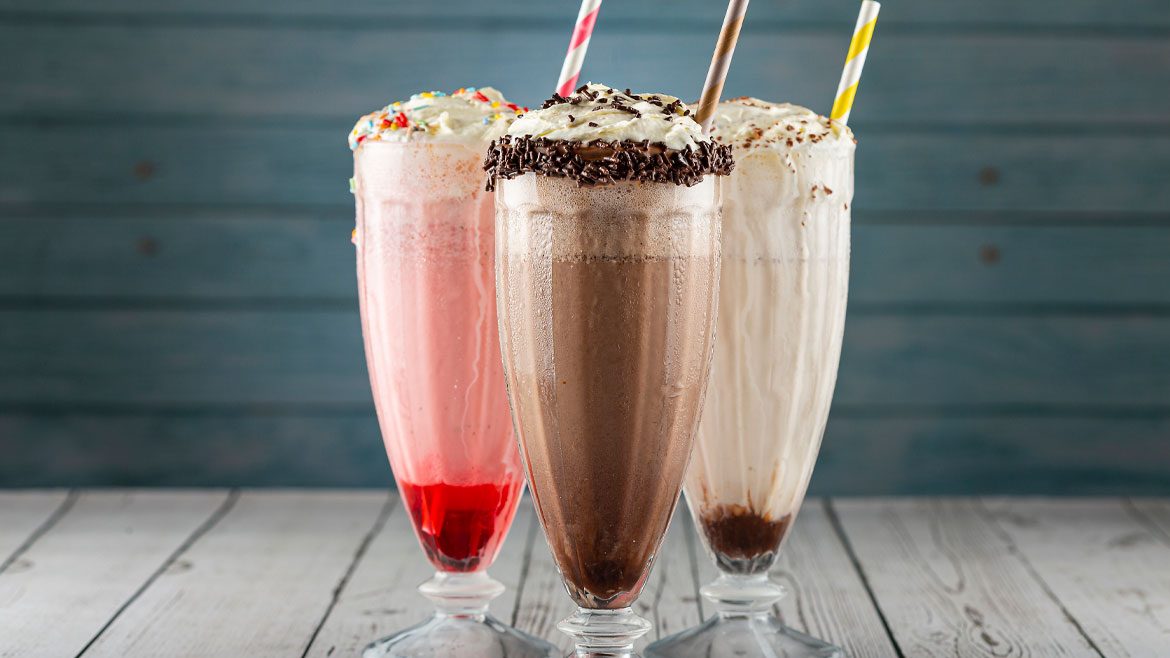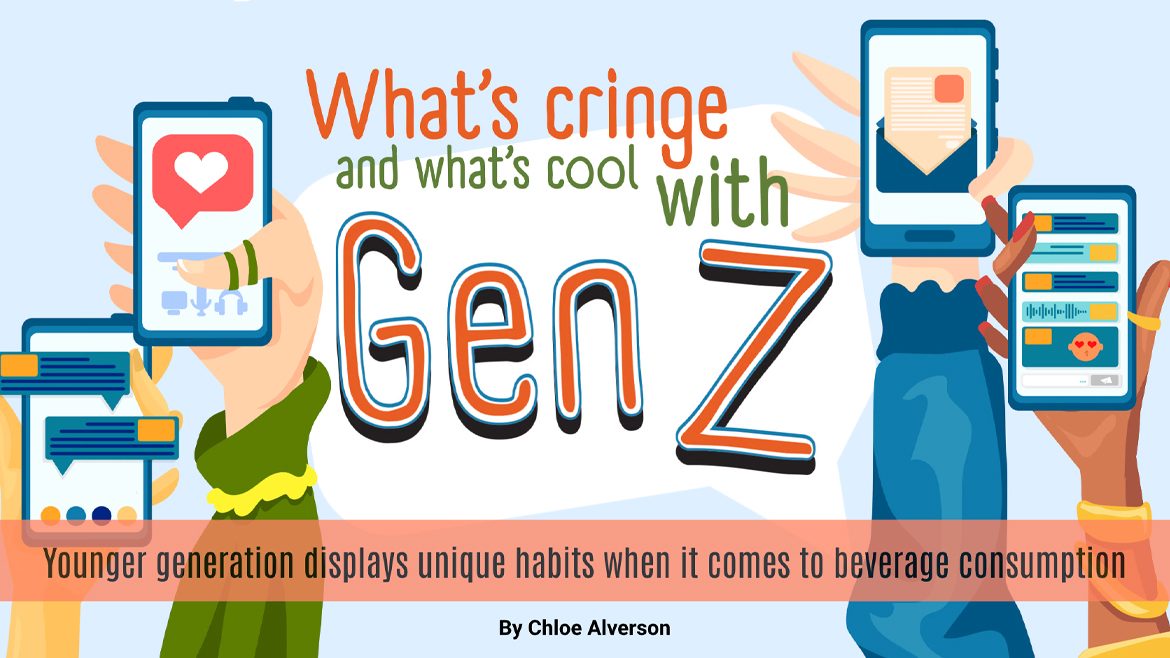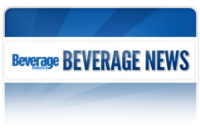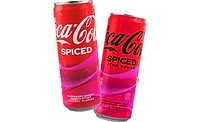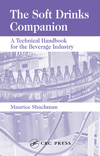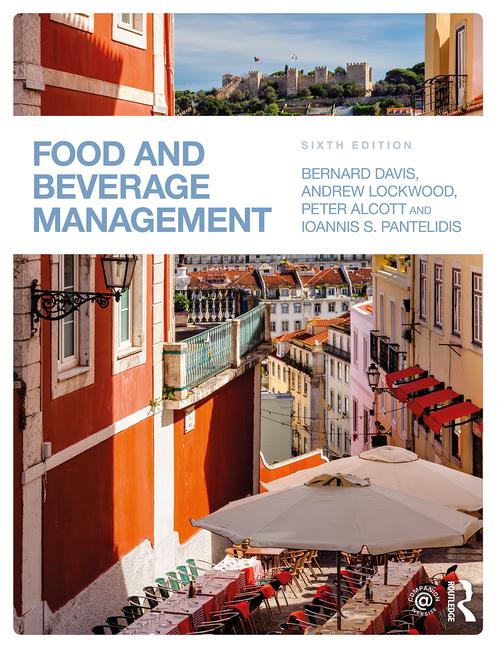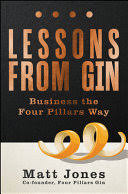The recipe for food and beverage brand communication

Snapple showcases purity by labeling its teas as “Made from the Best Stuff on Earth.” (Image courtesy of Dr Pepper Snapple Group)

Coca-Cola earns credibility by calling out its pedigree. (Image courtesy of The Coca-Cola Co.)

Evian continued its limited-edition designer packaging collection with a new design by Diane von Furstenberg. (Image courtesy of Danone Group)



Let’s admit it; we all, in some way, have “a foodie mindset.” It’s in human nature to be experimental with food and give in to indulgence sometimes — and for a few, most-times. People tend to form a subliminal relationship with what they eat and drink that in turn affects our eating habits. Food and beverages have varied meaning in our lives, which might differ from product to product, brand to brand and person to person. It is a part of socializing for some; a relaxation trigger, an accomplice; to some it brings social pride, status and a source of sheer indulgence and treats — a foodie’s paradise. This also is why, each and every day, all of us get bombarded by dozens of messages from food and beverage marketers and their advertising. TV commercials, billboards, Internet banners, shopper-level activation, quick-response (QR) codes, “Tell us your story,” “Follow us on Twitter,” “Like us on Facebook,” packaging designs screaming for attention, storefronts, promotions, sampling, CSR initiatives, microsites, etc. Some get registered in our memory, but most others don’t make a mark.
Because my work involves advising companies on how to build better and lasting brands — a lot of them being food and beverages — it came to a point where I wanted to find out the recipe for food and beverage brand communication. I wanted to decode what marketers are doing to make consumers choose a certain brand of dessert or get drawn to a certain brand of energy drink or a particular soup brand.
Just as the preparation of a sumptuous meal requires a recipe, marketing teams for food and beverage brands have their own recipes. Broadly, the ingredients fall into three layers: the functional, the emotional and the expression. Just as cooking is an art, the brand-marketers, or should I say brand-chefs, need to evaluate their ideal ingredients, ascertain the interplay between them, figure out how to make them work (or should I say how to cook) and finally figure out the best or most creative way to present or serve it to make it appealing and irresistible.
Taste:
The taste experience is the basic and most fundamental expectation and ingredient for food and beverage brand communication. In many ways, it is one of the basic category expectations. Taste experience also can translate to the sensorial elements such as crispiness, smoothness, sweet, sour, mellow, slow-effect, rapid action, etc. Having said that, the experience is not just physical or purely consumption based; the food and beverage brand owners seek to bring that experience much before the consumer actually buys it from the retail shelf, creating the desire, and in many ways the craving, to have one.
Irrespective of how the brand is positioned, explicitly or implicitly, a food and beverage brand cannot escape creating a drool appeal for their brand.
Human-connection:
Food and beverage brands are as much about the people as they are about the products because they are so intertwined in our lives. The other truth is that there’s a foodie mindset in everyone — some more overt — and who doesn’t like to relish eating and drinking well? It’s certainly a category that has so much of the human truth and the cultural truth attached to it.
For example, take the lives of homemakers. What she creates in her kitchen with her brands shows her love and affection, an opportunity to explore and display her creativity. It’s also her secret weapon and, at the same time, her personal self-indulgence; it’s her source of motivation, sometimes agony; the list goes on. And again, it has varied meaning to everyone, such as bonding, socializing, togetherness, love, affection, empowerment, relaxation, liberation, release, fun, hospitality, status and social pride.
Food and beverage brands have leveraged these emotions in the form of consumer insights, and many have established deep emotional affinity with their brands. For example, Atlanta-based The Coca-Cola Co.’s “Open Happiness” brand platform: Their friendship machine activation is perhaps one of the best examples of people bonding and togetherness. Stamford, Conn.-based Nestlé USA’s Nescafe brand is about little everyday moments, Purchase, N.Y.-based PepsiCo’s Mountain Dew brand “fuels the frenzy,” while Santa Monica, Calif.-based Red Bull USA’s Red Bull “gives you wings.”
Purity:
Purity is one of the most important attributes that people consider, consciously and subconsciously, as it’s a category of physical consumption, having direct impact on health and wellness. That said, it also is true that sometimes (or many times) people do trade off the purity factor to taste or value, but still there’s an expectation from brands (and regulatory food authorities) to maintain a reasonable threshold level of safety.
From the consumer language, purity is about authenticity and quality of ingredients, the freshness, the more natural or naturally sourced the better (think organic food category), and the less it is processed or modified the better (think food and beverage brand packaging with messages like “no preservatives,” “no artificial colors,” or “no added sugar”). On the other hand, ask a foodie about authenticity, and it’ll be like a poem: difficult to explain, but you may probably feel it.
 From the brand positioning standpoint, many brands have taken this route or have evolved to this platform. For example, Plano, Texas-based Dr Pepper Snapple Group’s Snapple brand says it is “made from the best stuff on earth,” and PepsiCo’s Tropicana Pure Premium packaging design suggests that it is as natural as getting the juice directly from fruits — their “Grower Manifesto” commercial also plays on the authenticity and knowledge (the timing of budding, water, amount of sun, etc.).
From the brand positioning standpoint, many brands have taken this route or have evolved to this platform. For example, Plano, Texas-based Dr Pepper Snapple Group’s Snapple brand says it is “made from the best stuff on earth,” and PepsiCo’s Tropicana Pure Premium packaging design suggests that it is as natural as getting the juice directly from fruits — their “Grower Manifesto” commercial also plays on the authenticity and knowledge (the timing of budding, water, amount of sun, etc.).
Health:
If purity is the reason to believe, then health is the ultimate benefit sought by the consumers. Similar to the purity factor, consciously and subconsciously consumers do care about nutritional value they derive from their food and beverage consumption, but also tend to trade off the nutritional value to taste or value offerings.
Because of the direct relationship between the purity factor and the health factor, the communication messages of the brands often cross each other. For example, Paris-based Danone Group’s Evian brand has a “Live Young” message, which conveys purity (from the heart of the Alps). Camden, N.J.-based The Campbell Soup Co.’s V8 juice with its communication of, “Could’ve had V8,” provokes people to choose a healthier alternative. Within the hot beverage category, the Lipton brand, part of The Pepsi Lipton Tea partnership, a joint venture between PepsiCo and Englewood Cliffs, N.J.-based Unilever, says, “Drink positive.”
Pedigree
Some brands earn their credibility because of their rich heritage and years of existence. It is not such a crucial ingredient, but subconsciously (and even consciously) it does bring about reassurance and trust. The subtle indicators hinting the originality of a product increase its attractiveness. This explains why brands often communicate to consumers when they originated.
For example, The Coca-Cola Co. recently celebrated 125 years with a worldwide multimedia campaign reinforcing its rich heritage.
Attitude:
Some brands stand out from the sea of sameness by the way they present themselves. One can argue that all brands have some-or-the-other brand persona or fit into a brand archetype, but some brands sharply cut through the competitive clutter. It maybe a crucial factor, especially when there’s not enough differentiation at a product level, but on the contrary, even if there’s a sharp product differentiation, having a unique brand persona adds to the overall brand appeal.
For example, when Innocent juices launched in the United Kingdom, it was the only smoothie producer in the market to offer drinks made from fresh fruit with the very simple idea that every product contains 100 percent pure, fresh ingredients and no fruit concentrates. During the last decade, many other brands have come into the market with a similar proposition, but Innocent still holds the edge because of its unique brand persona. It's not the general loveliness of the brand — the bottles with knitted wooly hats, its quirky (some would say cloying) tone of voice or the vans covered with astroturf — that made consumers love it so much; it is because it is such a shining example of the value of a brand to a business. Similarly, Los Angeles-based Pom Wonderful’s “playful-mindful” persona makes its Pom brand stand out from the advertising clutter in the juice category.
Packaging:
Packaging is a relatively long-term medium in a brand’s communication mix. It is right at the center of the brand’s consumer proposition and brand’s shopper proposition and is, therefore, an essential component in the communication mix. A good packaging design not only motivates shoppers to choose, but also builds brand equity and supports what is advertised. Today, many brands have taken a simple product packaging to another level, where they see it as another media in which to engage consumers.
For example, Seattle-based Jones Soda found it more relevant to put consumers’ pictures on their packaging labels with their “Your Photo, Your Soda, Your Brand” campaign. The My Jones website empowers its consumers to customize their own labels with their own pictures and messages and lets them choose a flavor for their wedding, birthdays, etc. Similarly, the “Share a Coke” campaign lets consumers put their names on Coca-Cola bottles and cans.
Packaging also can inspire brand communication. For example, apart from their official website, Purchase, N.Y.-based Pernod Ricard’s Absolut vodka includes ad archives created by Absolut fans. Limited- or special-edition packaging is another route many brands have explored to generate buzz and gain fresh traction.
Convenience:
The convenience factor in food and beverages is largely driven by busy lifestyles and the aging population. Marketers attempt to bridge the gap between the declining consumer’s culinary knowledge and skills and, simply put, take the chore out of food preparation and the consumption process.
Apart from the ease of use, saving time and overcoming complexity, today the convenience factor also offers other linked propositions and benefits such as the variety to explore, tools to experiment with, availability despite the season, and, in some cases, a relatively lower cost.
Key learnings and takeouts:
Building a successful food and beverage brand focusing on the above ingredients can provide a handy framework for brand marketers. It might not be a universally applicable methodology, but it can serve as an analytical toolbox. The degree of importance for each ingredient can vary from brand to brand, the life stage of the brand, the category maturity level, the cultural setting, and the source of the differentiating attribute.
In summary, although most of the functional parameters like taste, purity, health and convenience have fairly become a category expectation, the excellence within these can provide a strong rational hook if supported by a strong reason to believe. On the other hand, the emotional parameters like pedigree, attitude, human connection and packaging can help brands gain irrational edge; of course, promises rooted in human emotions have to be backed by substance and functional product truths.
The list of questions below can help food and beverage brand marketers in the brand development/evolution process. This is not an exhaustive list, but it offers directional points to consider or ponder:
Taste:
- Does my brand at a product level have any extraordinary taste-/experiential-led support?
- Is it unique and differentiated enough to give it a competitive advantage?
- Will taste as a primary platform provide a sustainable long-term differentiation or allow message evolution in the future?
- Is this a motivating enough reason for people to connect with the brand?
Human-connection:
- Are my functional product truths established to take an emotional leap? (Note: It’s not necessary that the emotional leap for a brand has to be stage-wise.)
- Is my brand in a category where I have insignificant product/functional differentiation? (Note: It doesn’t mean that if the brand doesn’t have significant product differentiation it can find an escape route through emotional message.)
- Which human emotion should the brand connect to to have a seamless correlation with the product offering? Is this a motivating enough reason for people to connect with the brand?
Purity:
- Does my brand have a unique ingredient/purity story that can be convincingly substantiated?
- Does it provide sustainable long-term differentiation and is it motivating enough to drive trials/usage?
Health:
- Does my brand have a demonstrable and credible health benefit that can be claimed?
- Can it be substantiated with research or endorsement from credible institutions/experts?
- Does it provide sustainable long-term differentiation and is it motivating enough to drive trials/usage?
Pedigree
- If my brand has a rich heritage, will playing upon it dramatically add to the overall brand equity?
- To what degree should I utilize it? How do I balance it with the “newness” factor and be effectively relevant with the times?
- Should it be my primary message or a secondary feel-good legacy assurance?
Attitude:
- Do I truly believe in the brand attitude? Does it truly reflect the brand personality I’ve envisioned?
- Is it differentiated enough and sustainable for the long-term?
- Will I be able to consistently keep up to the brand attitude and be relevant with evolving times?
Packaging:
- How do I envision the role of my brand’s packaging? Is it purely functional (informative, reflecting brand essence and proposition) or utilized as another campaignable canvas?
- What should be the degree of evolution?
- Am I looking to generate resonance or dissonance?
Convenience:
- Is there a product hook that can support this platform?
- Is the brand trying to address one of the barriers in consumers’ lives powerful enough to build on this platform?
- Is it differentiated now and can it give sustainable differentiation later?
Like with most chefs who carefully select the ingredients, evaluate the proportions, start the cooking process in line with their consumers’ tastes, smell it, taste it, pre-test it, modify flavors/spices, present it in the most creative way, and, finally, personally take feedback from guests, the tasks of brand marketers are pretty similar.
Looking for a reprint of this article?
From high-res PDFs to custom plaques, order your copy today!
